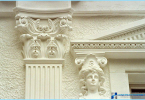The contents
Lime plaster is a versatile material, therefore widely used in various construction works: pouring the Foundation, building and strengthening the walls, the facing surfaces.
Varieties of plaster ↑
Plaster is leveling and protective layers applied on the outer surface of the walls in a certain amount. Using this surface material safely protects against the negative action of external factors, increase the efficiency of application of the coating materials.
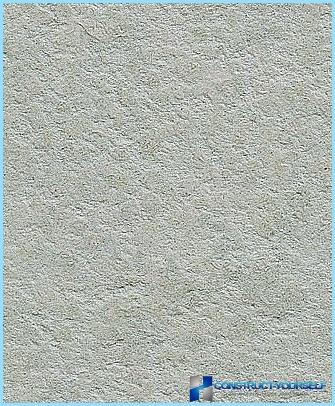
In the standard version of the known solution contains the following components:
- river sand;
- binder (lime);
- water.
For clarity, here is the video
The main advantages of using lime plaster: ↑
- Environmental safety.
- No unpleasant odor (can be applied to the inside wall).
- Cheap components.
Lime may also be different according to color (gray, white), chemical composition (quicklime, slaked).
The disadvantages of lime plaster:
- the use of such composition in areas with little humidity;
- hypersensitivity to external stimuli;
- low air resistance.
How to cook with their hands lime plaster ↑
For making lime mortars need to do the following steps:
- First you need to determine the kind of solution so it is optimally suited for a particular room. ?The Council! In living rooms with standard humidity, it is better to use cement-lime plaster. Similar compounds are not suitable for outdoor use, as they easily absorb moisture.
- Preparing cement – lime plaster involves a specific sequence of actions.
- ?preparation of selected component dry plaster mix;
- ?careful dilution of the mixture with warm water.
- For mixing you can use any capacity, given the parameters of processed surfaces, the size of the tools used to work. The bottom is chosen for the preparation of cement – lime mass should be smooth. Lime has very low solubility in water, so it will remain in the recesses of the uneven bottom, resulting in possible overspending of the mixture, and incorrect consistency of the prepared solution.
For a full solution:
- the bottom should be thoroughly cleaned of dirt, foreign objects (if necessary, align);
- evenly over the entire area of the tank fill sand, free from stones;
- top with a thin layer distribute the lime;
- the components are thoroughly mixed, obtaining a uniform mass;
- sleep for another 2-3 layer of sand and lime.
Such actions allow to obtain a homogeneous mass, which is a full mix after adding in a mixture of warm water that you can see in the video.
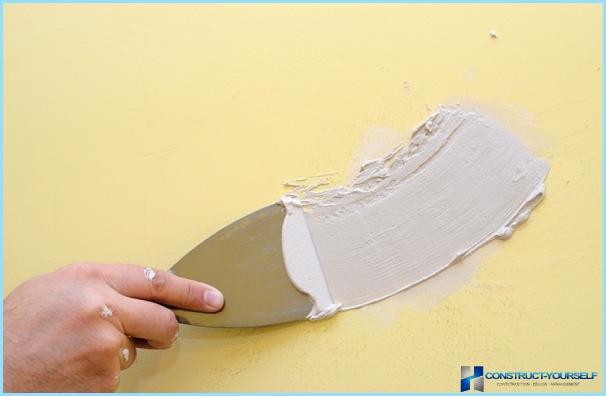
Proportions when diluting ↑
To the mixture water is added in small portions, constantly stirring the mass until a homogeneous composition. If you neglect this advice, as a result, the solution will be a huge amount of lumps that will spoil the appearance of the coating. Tools required to operate, pick up, given the characteristics of the surface on which plaster is applied.
Classical relations between the components in the preparation mixture:
- 1 part lime, 4 parts sand;
- 2 parts lime, 1 part cement;
- 3 parts lime, 1 part gypsum.
Depending on the starting components, the ratio changes.
It is also important to determine the viscosity of the working solution. This will require a shovel or a metal stick. The object dipped in the prepared solution, lift up. With the rapid runoff of the liquid, no surface traces in the solution containing excess amount of water, add the dry mixture. When you receive a thick solution of plaster you add the warm water. Optimal is the variant when the working solution on the blade is applied a thin layer, in this case, it is firmly mounted to the wall.
Before will be the subsequent decorative work, it is important to give time plastering-lime layer dry completely. Duration of drying depends on the humidity of the room air temperature. Cement – lime mortar dries for 2-3 days, will have to postpone finishing work.
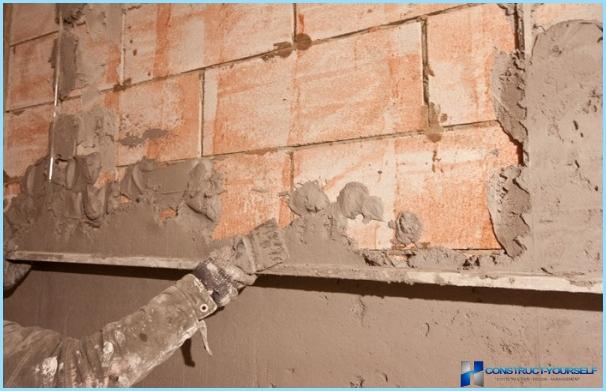
Characteristics of lime–cement plaster ↑
This mixture is a wonderful option for use in rooms with high humidity. Basically this composition is used in bathrooms before tiling.
In the preparation of the solution takes 3-5 parts sand, 1 part cement, 1 part lime. To prepare such a solution would require minimal physical and time costs.
Algorithm of actions:
- Mix cement and sand;
- Add in the right amount of water;
- Stirred components, optionally adding water.
Features cement – sand plaster ↑
Among the distinguishing characteristics of this solution will highlight the strength and durability. The composition is resistant to high humidity, it can be used for decorating bathrooms, facades, balconies, loggias.
- Principal component (binder) composition of the cement brand M150-500. Mark indicates the maximum pressure that the solution can withstand is based on 1см3. For internal works use brands M200 and M 150. In the case of facade work used cement marked M300.
- The filler acts as a career or river sand. Its quality directly affects the reliability and durability of the finished plaster.
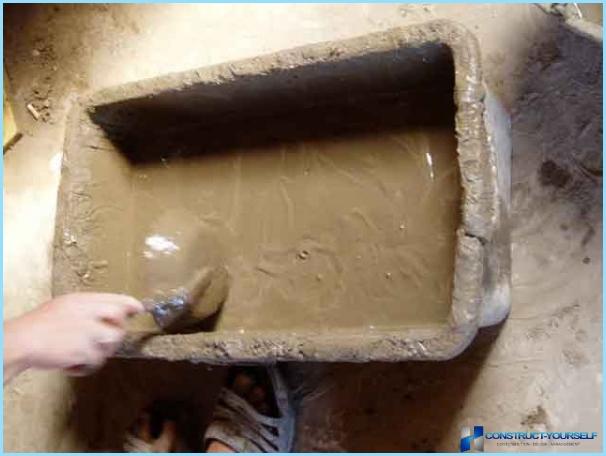
Why do we need supplements? ↑
With a variety of additives increases the plasticity of the solution. Redispersible polymer powders and the copolymers affect the following characteristics of the plaster:
- flexibility;
- plasticity;
- strength;
- resistance to mechanical deformation;
- adhesion;
- elasticity;
- frost
Types of cement – sand plaster ↑
Sand-cement plaster is of the following types:
- Simple. It is characterized by the application using obryzga and a ground, does not involve installation, construction of beacons, create a top layer. Such option is popular indoors in need of smooth surfaces (the lining of attics, basements, sheds). The main purpose of this type is the elimination of cracks, chips, holes and other defects, antibacterial surface treatment.
- The improved plaster apply 3 or more layers (spray, primer, nakryvka) is the use of trowels. It is recognized as the most popular variant of the stucco mixtures used when carrying out plastering work indoors, decoration of facades of public and private buildings. After the use of such composition, the surface is smooth, flat, has square corners.
- High-quality plaster involves the installation of beacons, put at least five layers. This variant is suitable for facade and interior renovations, requiring a high surface quality.
Conclusion ↑
The disadvantage of cement is its considerable weight. To reduce this indicator, the solution was added lime. To obtain high-quality working solution, do not save time on mixing the components, the result will surprise you.



